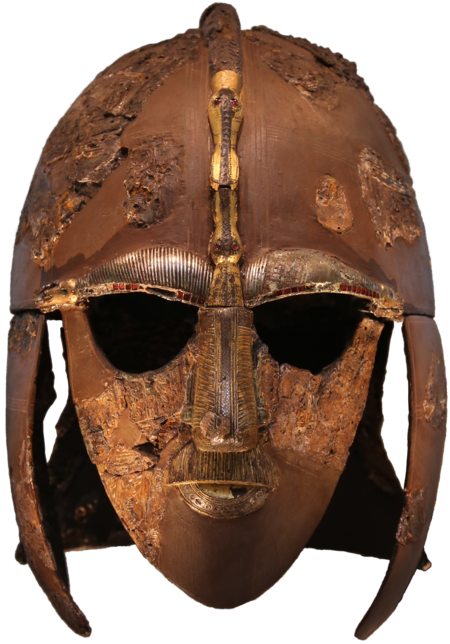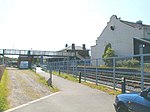Sutton Hoo helmet

The Sutton Hoo helmet is a decorated Anglo-Saxon helmet found during a 1939 excavation of the Sutton Hoo ship-burial. It was buried around the years c. 620–625 CE and is widely associated with an Anglo-Saxon leader, King Rædwald of East Anglia; its elaborate decoration may have given it a secondary function akin to a crown. The helmet was both a functional piece of armour that would have offered considerable protection if ever used in warfare, and a decorative, prestigious piece of extravagant metalwork. An iconic object from an archaeological find hailed as the "British Tutankhamen", it has become a symbol of the Early Middle Ages, "of Archaeology in general", and of England. The visage contains eyebrows, a nose, and moustache, creating the image of a man joined by a dragon's head to become a soaring dragon with outstretched wings. It was excavated as hundreds of rusted fragments; first displayed following an initial reconstruction in 1945–46, it took its present form after a second reconstruction in 1970–71. The helmet and the other artefacts from the site were determined to be the property of Edith Pretty, owner of the land on which they were found. She donated them to the British Museum, where the helmet is on permanent display in Room 41.
Excerpt from the Wikipedia article Sutton Hoo helmet (License: CC BY-SA 3.0, Authors, Images).Sutton Hoo helmet
Haddon Approach, East Suffolk
Geographical coordinates (GPS) Address Nearby Places Show on map
Geographical coordinates (GPS)
| Latitude | Longitude |
|---|---|
| N 52.089166666667 ° | E 1.3380555555556 ° |
Address
Sutton Hoo Archeological Site
Haddon Approach
IP12 3DN East Suffolk
England, United Kingdom
Open on Google Maps











